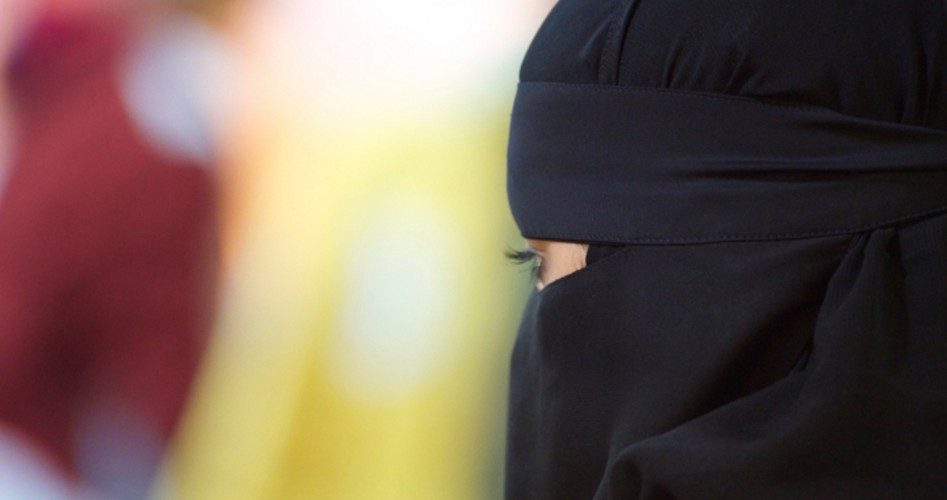
St. Gallen, a second canton in Switzerland, voted by a decisive margin on Sunday to ban burqas — the full-length garments made famous in Taliban-controlled Afghanistan. The parliament had voted to ban the burqa, but because of demands from the Young Socialist Party and the Green Party, it was put to a referendum.
Sixty-seven percent of the voters in St. Gallen supported the ban.
St. Gallen becomes the second region in Switzerland to ban burqas in public places, joining the southern canton of Ticino, which led the way with an anti-burqa law two years ago. A ban on the burqa (and the niqabs, or head-coverings) have either been enacted across Europe in recent years, or they are drawing wide-spread support in other countries.
The reasons most often given for the ban include the argument that they symbolize second-class status for women and should be outlawed. Others support burqa bans because they are considered to present a security risk in the age of violent terrorism. The burqa is most associated with followers of the Islamic religion, a religion that has been increasingly identified with terrorist activities (although, of course, only a tiny minority of Muslims actually join in committing such acts of violence designed to advance their religious-political goals).
The Islamic Central Council, the largest Islamic organization in the mostly-German speaking republic, has recommended that Muslim women defy the law and continue to wear the body-covering garments. On the other hand, activists who oppose the public wearing of the burqa have collected the more than necessary 100,000 signatures to force a national referendum in Switzerland. Many opponents of a national ban argue that the issue should be left up to the local canton to decide whether to ban the burqa.
It is likely that the national referendum in Switzerland will lead to a national ban, as surveys indicate that as many as three-fourths favored effectively banning the face veil. Only 20 percent said they opposed such a ban.
The law in St. Gallen stipulates that “any person who renders themselves unrecognizable by covering their face in a public space, and thus endangers public security or social and religious peace will be fined.”
Switzerland is not alone in the push to restrict the wearing of the burqa. For example, the Netherlands said in 2015 that a woman could not have her face covered while riding public transportation, or while in a hospital or a school. Pushes for a ban have also occurred in Italy and Spain.
Interestingly, after the Spanish Supreme Court partly over-turned the ban in 2013, holding that such a ban was a limitation on religious freedom, the European Court of Human Rights ruled that banning a face veil does not violate any rights. France was the first country in Europe to ban wearing the burqa in public. In 2011, the French government totally banned full-face veils, expanding on its earlier 2004 ban on the wearing of any forms of religious symbols in school (which included Christian and Jewish symbols, as well). Belgium (a French-speaking country) soon followed France’s lead. In a nearly unanimous vote, the Belgium government stipulated that a woman caught wearing a veil can face up to seven days in jail.
Even Germany’s Angela Merkel, known for her pro-immigration stance, favors a ban, saying, “Show your face. The full covering is not permissible and should be banned.”
Most arguments on this issue divide on the questions of religious liberty versus security. While the burqa is worn mostly by Muslim women, most Muslim women do not wear burqas. In fact, there is nothing in The Koran that remotely suggests women have their bodies totally covered while in public. The Koran does direct both men and women to dress modestly and avoid revealing “any parts of their bodies, except that which is necessary.”
While one could argue that this could logically lead to the wearing of a burqa, such an interpretation was not taken for the first three hundred years of Islam. It originated in Persia (now Iran) in the 10th century, and was later adopted in other countries, such as Afghanistan. The Taliban made the wearing of the burqa mandatory for all women when they seized power there in 1996.
Certainly forcing women to wear the burqa, via government decree, can hardly be considered “liberty.” Neither can a woman being bullied into wearing such a garment by either male relatives or religious theocrats be a stance supporting religious liberty.
It appears that the burqa is more of a cultural tradition rather than an Islamic requirement. In 1958, Egyptian President Gamel Abdel Nasser publicly ridiculed the idea of requiring the wearing of the hijab (basically a head-covering) by women in his country. He noted that the head of the Muslim Brotherhood asked him to force women to wear the hijab in public. Today, of course, it is no laughing matter, as Islamic clerics, family members, and even some governments in the Muslim-majority world do order women to wear face-covering and body-covering clothes.
The closest to such laws enacted in the United States are various anti-masking state laws designed to restrict violent activities of the terroristic Ku Klux Klan. Klan members routinely wore white hoods to conceal their identities while they committed violent acts — acts intended to intimidate others to follow their cultural ideas on matters such as segregation and inter-racial dating.
In more recent times, these anti-masking laws have been used when political protesters such as the leftist Occupy Movement wear masks to conceal their identities while they commit violent acts.
It is hardly a religious liberty right to conceal one’s identity while committing an act of terrorism, or any other violent crime. And no one can be taken seriously that he is for “liberty” while simultaneously forcing a young woman to wear a garment that totally conceals her body. Yet, concern that government could use such fears to restrict non-violent liberty makes this a difficult issue for supporters of religious liberty for all.
Photo: Paolo_Toffanin/iStock/Getty Images Plus


